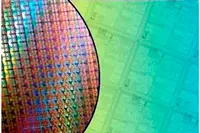Electronics News
Archive : 20 January 2016 год
 CUI has announced a partnership with Virtual Power Systems (VPS) to set a new standard for an efficient power infrastructure for data centres.
CUI has announced a partnership with Virtual Power Systems (VPS) to set a new standard for an efficient power infrastructure for data centres.
In this agreement, CUI will design, manufacture and distribute the hardware component of the ICE (Intelligent Control of Energy) system, said to be the only solution for intelligent power utilisation available today. The ICE Block hardware is managed and controlled through the ICE Platform, an integrated suite of software developed by VPS.
This partnership between the two organisations is the first step in creating a larger Software Defined Power ecosystem, from board level to system level, ultimately creating an intelligent, efficient data centre infrastructure.
Through numerous surveys and studies, data centre power consistently emerges as the most critical area that needs to be addressed to support the growth of the Internet of Things, mobile, and supporting infrastructure. Even the best designed data centres waste more than 75% of their available power and infrastructure as servers sit idle. ICE is claimed to double power and server utilisation while reducing total cost of ownership by up to 50%.
“We see VPS’s technology as a difference maker for the data centre, but we also see value in other markets going forward,” said Matt McKenzie, president of CUI. “A true Software Defined Power ecosystem requires a collaborative effort, and our partnership with VPS is the first of many we will look to so we can continue to support this space in new and innovative ways.”
An existing data centre can see up to a 15 to 25% reduction in power cost coupled with the avoidance of 40 to 60% of conventional capex investment with the combined ICE system as it fits into the available rack system, saving space. In addition, this infrastructure will enable data centres to continue their growth paths via a solution that can be installed and initialised in just days rather than the months required with traditional approaches.
The ICE Power Cache is a fully-redundant, hot-swappable power supply that controls power use in real time. It features lithium iron battery modules that can keep an entire rack running for up to seven minutes at full load if power is lost.
The unit uses machine learning to flatten power peaks during periods of high utilisation in real time, deliver power when needed, store it when it’s not and dynamically managing the peaks and valleys of demand, resulting in higher performance.
Shankar Ramamurthy, CEO of VPS, said: “VPS needed a partner that could move quickly, understood the value of Software Defined Power, and had the design capabilities required to develop the hardware that could mate with our innovative software. CUI became the logical choice as our hardware partner.”
Ramamurthy added that data centre operators “can immediately start benefitting after installing the ICE system, experiencing improvements in operational flexibility, utilisation, and management with little intervention required.”
Author
Tom Austin-Morgan
Source: www.newelectronics.co.uk
 Continental says that its electronic horizon (eHorizon) sensor system can play just as important a role in vehicle fuel efficiency as the properties of the engine, weight and aerodynamics.
Continental says that its electronic horizon (eHorizon) sensor system can play just as important a role in vehicle fuel efficiency as the properties of the engine, weight and aerodynamics.
Based on high-precision topographic trip data and a GPS signal, the eHorizon supplies a three-dimensional profile of the route ahead to the Adaptive Cruise Control and other electronic control units in the vehicle. Together with software from the vehicle manufacturer which adapts the vehicle’s driving style to the road, helping to reduce fuel consumption.
In the last year, European truck maker, MAN has integrated the sensor system into its vehicles. Tests verified by TÜV have shown that it achieves fuel savings of more than 6%. By Continental’s estimates, it has been possible to save more than 195million litres of diesel fuel since 2012, when the technology went into series production. This corresponds to more than €260m and more than 515,000 metric tons of CO2.
The eHorizon continuously compares the position of the vehicle with high-precision topographical map material and passes information on the route ahead to other control units. These units automatically adapt the driving style and speed to the route ahead. For example, the vehicle accelerates before an uphill stretch in order to gain the greatest benefit from the available torque and reduces gear changes to a minimum. Before a downward incline, vehicle speed is reduced to take maximum advantage of the vehicle acceleration during the descent.
In the next expansion stage, the connected eHorizon, the sensor system can save data recorded by the vehicle locally and transmit it to a cloud-based environment. Here, the data from all vehicles fitted with the eHorizon is collated and made available to all users at regular intervals for map updates. This allows detailed information to be incorporated into a digital map or newly created for routes where only partial map data is available.
In the final expansion stage, the dynamic eHorizon, the digital map material is updated by interlinking it in real time to a location cloud. In addition, Continental intends to improve the maps with further information that is important for road users. Then the system will also warn the driver of suddenly occurring events such as poor weather, accidents or traffic jams.
Dr Michael Ruf, head of Continental’s Commercial Vehicles & Aftermarket Business Unit, said: “The eHorizon thus becomes a high-precision, up-to-date information carrier. This will not only improve driving comfort and driver safety, but also help commercial vehicle manufacturers to further reduce the total cost of ownership, which is a crucial factor for them.”
Author
Tom Austin-Morgan
Source: www.newelectronics.co.uk
 FlexEnable and ISORG, specialists in flexible organic electronics and organic photodetectors and large area image sensors in printed electronics respectively, have unveiled the world’s first large area flexible fingerprint sensor on plastic designed for biometric applications.
FlexEnable and ISORG, specialists in flexible organic electronics and organic photodetectors and large area image sensors in printed electronics respectively, have unveiled the world’s first large area flexible fingerprint sensor on plastic designed for biometric applications.
With a thickness of 0.03cm, an 8.6 x 8.6cm active area, 84µm pitch and 1024 x 1024 pixel resolution, the sensor is said to operate in visible and near infrared up to wavelengths of 900nm. The technology is also capable of measuring not only the fingerprint, but the configuration of veins in the fingers as well, providing additional security versus that of a surface fingerprint alone.
This has been achieved by deposition of ISORG’s organic printed photodetectors (OPD) onto FlexEnable’s plastic organic thin-film transistor backplane to create a flexible fingerprint sensor that is light, robust and lensless. The companies claim that the sensing area can be applied to almost any surface, even wrapped around objects such as a car steering wheel that recognises the driver as soon as the wheel is touched, or a credit card with integrated biometric detection that does not compromise current form factors.
Chuck Milligan, CEO of FlexEnable, said: “Imagine a mobile device whose surface or edges know who is holding or touching the device. Such capabilities are viable because of the flexibility, thinness, and much lower cost per unit area compared to silicon area sensors.”
The cost advantages of flexible plastic fingerprint sensors to area manufacturing are due to the low temperature and printing process on plastic rather than silicon. Moreover, fingerprint sensors made of plastic have similar optical performances to conventional optical fingerprint sensors such as sensitivity, linearity, and low noise, but without the need for expensive and bulky optics.
Jean-Yves Gomez, CEO of ISORG, added: “This breakthrough development will spark the creation of next-generation products in biometrics.No other solution can offer large area sensing as well as finger print and vein recognition while being flexible, light and robust. Moreover, our team is able to provide reference design as well as image improvement algorithms and illumination solutions to ease the sensor integration into new applications.”
Author
Tom Austin-Morgan
Source: www.newelectronics.co.uk
 Following the launch in 2015 of embedded SRAM IP for 28nm fully depleted silicon on insulator (FD-SOI) process technology, Sheffield based sureCore has now unveiled a memory compiler for the process.
Following the launch in 2015 of embedded SRAM IP for 28nm fully depleted silicon on insulator (FD-SOI) process technology, Sheffield based sureCore has now unveiled a memory compiler for the process.
The compiler is said to allow designers to trade off the number of words, word length and multiplex factor. Supporting single and dual port SRAM IP, the compiler allows designers to select capacities up to 1Mbit, word lengths of up to 288bit and support for mux factors of 4, 8 and 16. It also generates datasheets, simulation, layout and timing/power models automatically.
“The availability of this compiler marks a key milestone for sureCore and demonstrates the power saving technologies we developed are now available to the SoC design community,” said sureCore’s chairman Guillaume d’Eyssautier.
The single port SRAM IP, which works from a supply between 0.6 and 1.2V, is said to have a dynamic power consumption that is more than 50% less than other offerings, while static power is said to be up to 35% lower.
The company plans to introduce a 40nm ultra low power compiler in March 2016 and says a 40nm CMOS ultra low power SRAM will arrive later next year. A 28nm CMOS solution is also being developed.
“There is still considerable innovation happening at relatively mature production nodes,” claimed sureCore’s CEO Paul Wells. “Mature nodes, such as 40nm are 28nm. are taking on an extended life [and] their cost performance is ideal for the IoT’s technical and business challenges.”
In May 2013, sureCore won a £250,000 SMART award from InnovateUK to help develop its low power SRAM technology and produced a demonstrator chip in October of that year using STMicroelectronics’ 28nm FD-SOI process.
Author
Graham Pitcher
Source: www.newelectronics.co.uk

